project06:Challenge
Contents |
NDSM Eco-system
History and Development
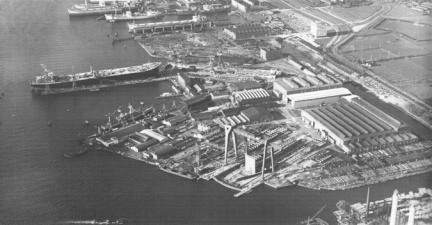
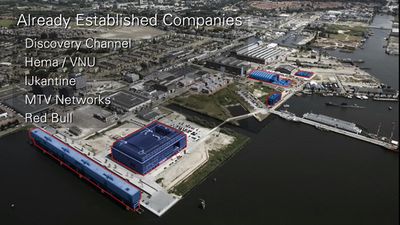
The Noord district of Amsterdam had always felt a world apart. NDSM has been a shipyard until 1979, after that the site had been vacant. But now the noord has catch up: defunct warehouses have turned into ateliers for artists; companies (MTV, HEMA, etc.) moved onto the docks, festivals and galleries followed. Still more development has been planned: a hotel, housing projects...
Connection
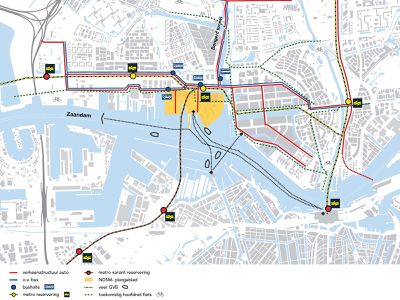
The public transport that connect NDSM to the central are the ferry and a bus stop at the north side. There are at least three types of people in the NDSM: the passers-by, the residents and employees of the commercial company, and the artist communities. Yet almost 50% of all are just the passers-by who use the NDSM as only a transition. survey
Identity
With an open space larger than 10 football fields, The NDSM has been known as a bleeding ground for underground culture in Amsterdam. NDSM's ample open space—a rarity in central Amsterdam—makes it ideal place for hosting a number of events and Festivals, some of which have more than 50,000 visitors.
The north of Amsterdam has always had a fiercely independent spirit, actually, the NDSM had been compared as 'the Berlin of Amsterdam'.
The Faded Glory
The glory of NDSM's freedom for the underground culture and independent artists is fading. There are now signs that the north is saying goodbye to the underground culture community. The Bunker was closed in 2011, which caused a protest of the angry artists; but the closedown was actually welcomed by the residents nearby, who had long been bothered by the noise of these underground parties.
The close down of the bunker indicate the different interest between the underground culture community and the residents. The artist community actually occupied only a small fraction of all the people in NDSM, and with the development of NDSM, it is predictable that the proportion will become even smaller. Yet the small portion have the greatest impact on the identity of NDSM. After all, the districts had developed from poverty to underground, and from underground to hip and happening.
Problems
1. Ample open space, yet lack of public facilities.
2. Lack of interaction between different communities.
3. The balance between groups of different interests, and the balance between freedom and rule.
Focus Points
Temporality
The time-span and scale and needs for the events happened in the NDSM are varied. The openness of NDSM makes it full of potential, the diversity of the site is thus dramatic both in character and the scale of the events, it could go from totally empty to fully crowded; from a place of art to a open market.
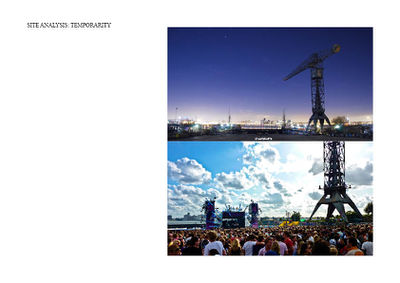
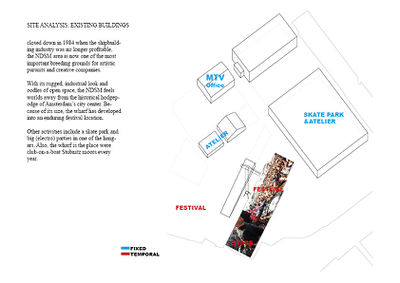
Music Festival
Kinder Atelier
Flea Market
Public Sphere
The vast open space is what makes NDSM attractive for big festivals, yet it is also this vast open space make it seem so empty, missing a public sphere that encourage communications among different groups of citizens. The open accessibility alone does not turn public space into public sphere.
The challenge is to maintain the characteristics of the NDSM, the creativeness, the atmosphere of freedom, the quietness of waterside, while providing facilities that adaptable to the vast diversity of NDSM, and a public sphere that encourage the interaction and understanding between different communities.
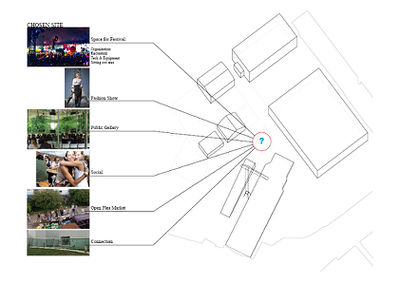
Strategy
Concept: The Interactive Field
The design concept here is to create a public sphere, that could encourge the interaction between different communities, that could enhence the identity of openness and creativeness of NDSM.
With every public event to be ephemeral, the public sphere should also be temporal and adaptable.
In this design, I look at the public event as a particle, or an attractor. The public sphere that consisted with multiple events would be like cloud of particles that would have unexpected and sometimes amazing interactions. Thus it's not an object, but a field that capable of interaction.
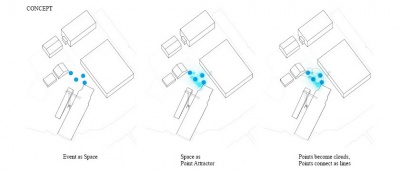
Input & Output
Input
For the interactive between the The input of the design would be the people, specifically, the density of hte people. The density of the people and the events happening within, would be used to determin the connectedness between the components within the field. The higher the density, the more connection between the components, the more complex the field.
A second input would be the exhibition space indicated from Project 04. The interactive field would change accordingly to the needs coming from Project 04.


Output
The output is a field of temporary pavilions with different connectedness according to different uses.
It is a urban furniture, a playground for the kids, an open market, a temporary exhibition space, or simply an artistic installation.
Together with Project 07 Industiral Garden from Miriam, the designs will form an interactive public sphere that encourage the interaction between different groups of people.
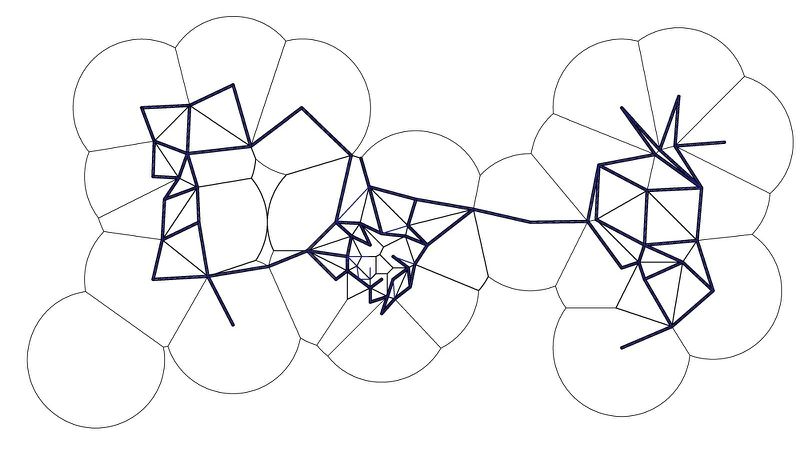
Validator
1. Events and festival organizations
During festivals the field is connective with the field of the festival and serve as organizaition or recreation space for the artist or the audiemce.
2. Office workers
Meeting point & playground. The interactive environment serve as a meeting point and playground for employees in the MTV Network.
3. Artist
The temporary pavillion could also serve as an open gallery for artistic exhibition.
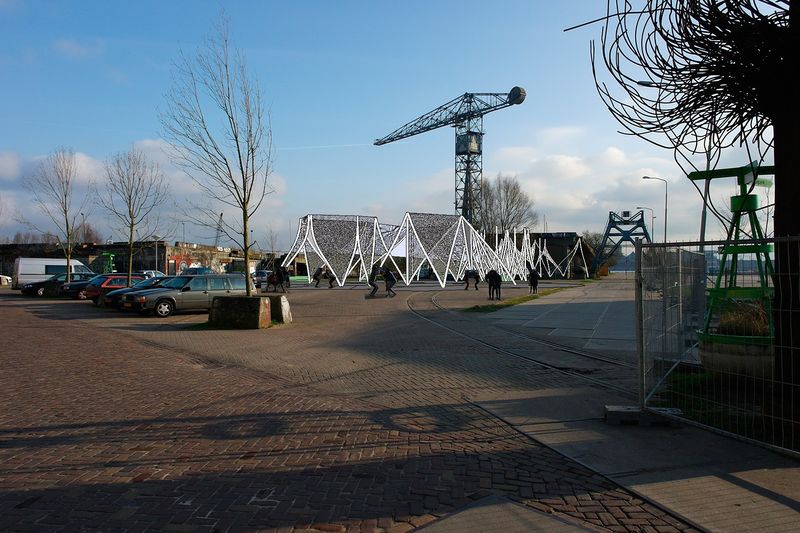
3. Open market
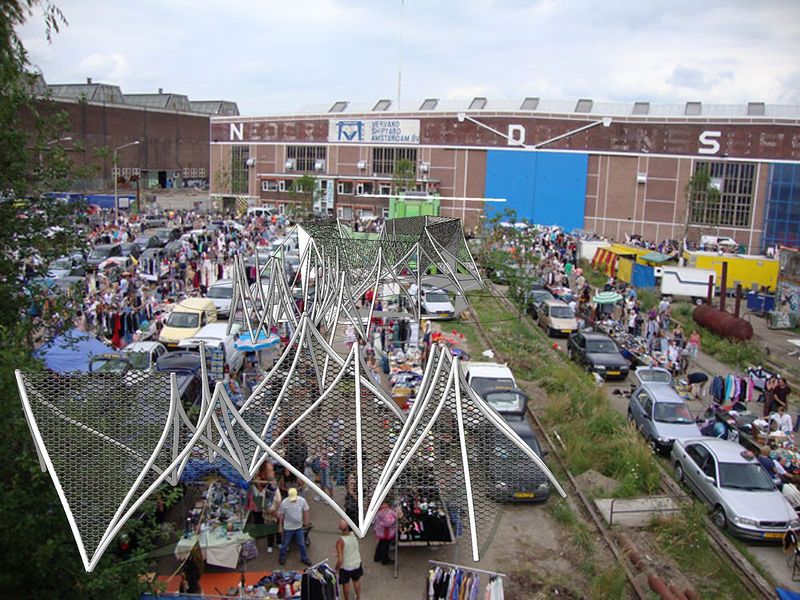
By encouraging the interaction between different groups of people while keep the openness of the public space, the intervention bring more control to the balance between freedom and rule. The creative spirit and the sphere that encourage interaction aim to contribute to the understanding between different communities, thus contribute to the ecosystem of NDSM.